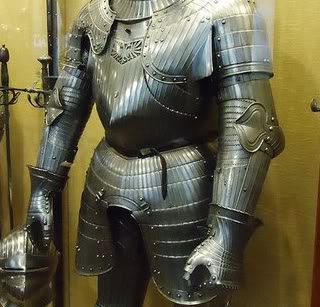I am interested in this kind of arm harness, enclosed in the elbow-pit (a place where forearm and the bicep meet).

Obviously these are made for a maximillian armour, but I was wondering if any like these were made before, like say, in the 15th century?
Thanks!
PS are there any modern armoursmiths that have reproduced these?